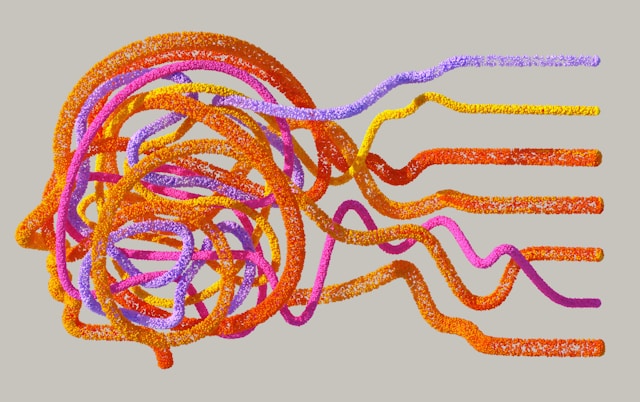Why Do Some Fitness Apps Go Viral While Others Don’t?
Is It Possible to Stop the Theft of Creative Works in the Age of AI?
How Does One App Get Kids to Learn Willingly?
Is a Virtual Card Right for Freelancers and Remote Workers?
Are You Still Using Outdated SEO Tactics in the Age of AI?
Why 360-Degree Feedback is More Powerful Than You Might Think
Is It Possible to Stop the Theft of Creative Works in the Age of AI?

The rise of artificial intelligence has brought both unprecedented innovation and a troubling side effect: a surge in digital plagiarism and creative theft. Artists, writers, musicians, and even businesses now face an uncomfortable truth — AI systems can replicate styles, generate derivative works, and reproduce original material almost instantly. In this new landscape, protecting creativity has become one of the most pressing challenges of the digital era.
The Double-Edged Sword of AI Creativity
Artificial intelligence has democratized creativity. With just a few prompts, users can produce artwork, compose music, or generate text that would once have required years of skill and effort. However, this accessibility comes at a cost. Many AI models are trained on publicly available datasets that often include copyrighted works without explicit permission from the creators. The result? Machines that can mimic human expression so effectively that distinguishing between inspiration and infringement becomes almost impossible.
For creators, this has blurred the line between fair use and theft. When AI-generated content borrows too heavily from existing works, ownership becomes ambiguous. And while laws governing intellectual property continue to evolve, enforcement lags far behind technological progress.
To combat this, many companies and copyright holders are turning to advanced tools like copyright infringement detection software that can scan the web, identify unauthorized reproductions, and initiate formal removal processes. These systems represent the new frontier of creative defense in a world where AI-generated duplication is the norm rather than the exception.

Why Traditional Copyright Laws Are No Longer Enough
For decades, copyright laws have relied on human accountability. If an artist plagiarized another’s work, there was a clear author and a clear violator. But when an AI system creates a piece of content, assigning responsibility becomes complex. Is the developer liable for how their algorithm is used? Or does the user who entered the prompt bear the blame?
Moreover, the sheer scale of AI content production has overwhelmed enforcement agencies. Millions of images, songs, and articles are uploaded daily, making manual oversight virtually impossible. Traditional legal frameworks were simply not designed for this level of automation and replication.
To adapt, governments and private companies are exploring new mechanisms for content tracking and ownership verification. Blockchain technology, digital watermarking, and AI-powered copyright registries are among the tools being developed to create transparent proof of authorship in real time.
Modern Strategies for Creative Protection
Protecting creative works in the age of AI requires more than legal documents — it demands technology-driven solutions and proactive strategies. Modern creators and businesses are now combining several approaches to minimize their exposure to theft and misappropriation.
Below are some of the most effective measures currently in use:
- Digital Watermarking: Embedding invisible identifiers into images, videos, and documents helps trace unauthorized use across platforms.
- Automated Monitoring: AI-based crawlers continuously scan websites, marketplaces, and social media for duplicate content.
- Smart Contracts: Blockchain-based agreements automatically enforce usage terms and payment conditions for licensed works.
- Legal Automation: Tools that generate and send copyright notices streamline the takedown process and reduce human error.
- Creator Education: Training artists and entrepreneurs to recognize potential infringements and register their works early provides a crucial first line of defense.

The Future of Ownership in an AI-Driven World
As AI continues to evolve, the idea of creative ownership itself may change. Collaboration between humans and machines is becoming the norm — yet this partnership also complicates authorship. Can an AI be credited as a co-creator? Should its output even qualify for copyright protection? These questions are sparking legal and ethical debates worldwide.
Still, there’s reason for optimism. The same technologies that pose risks also offer solutions. AI can help identify patterns of theft faster than humans ever could. Blockchain can record and timestamp creative origins. Together, these innovations could make it harder — not easier — for stolen works to circulate undetected.
In the end, completely stopping creative theft may be impossible, but significantly reducing it is within reach. By combining technology, law, and awareness, creators can maintain control over their intellectual property and thrive in a world where machines and humans shape the future of creativity together.
From Concept to Clicks: The Art of Web Design in London’s Creative Hub

In the bustling streets of London’s creative hub, the digital landscape thrives with innovation and ingenuity. Among the myriad industries shaping the city’s identity, web design stands as a cornerstone of modern business success. From concept to clicks, the journey of web design in London is a testament to the fusion of creativity, technology, and strategic thinking.
Web design London is not merely about creating visually appealing websites; it’s about crafting immersive digital experiences that captivate audiences and drive conversions. At the heart of this process lies the ability to translate ideas into interactive interfaces that resonate with users. This fusion of artistry and functionality is what sets London’s web design scene apart.
In this dynamic environment, web designers harness the power of cutting-edge tools and technologies to bring concepts to life. From wireframing and prototyping to coding and testing, each stage of the design process is meticulously executed to ensure optimal performance across devices and platforms.

With mobile responsiveness becoming increasingly vital, web designers in London are adept at crafting seamless experiences that adapt to the diverse needs of users.
London’s creative hub serves as a breeding ground for collaboration and innovation in web design. Design agencies, freelancers, and tech startups converge to exchange ideas, share insights, and push the boundaries of digital creativity. This collaborative spirit fosters a culture of continuous learning and experimentation, driving the evolution of web design practices in the city.
Moreover, the multicultural fabric of London fuels inspiration and diversity in web design. Designers draw from a rich tapestry of cultural influences, art movements, and architectural styles to infuse their work with depth and character. Whether it’s sleek minimalism, bold typography, or vibrant color palettes, London’s web design landscape reflects the city’s eclectic spirit.

As businesses in London recognize the pivotal role of online presence in today’s digital age, the demand for expert web design services continues to soar.
Companies seeking to establish their brands online turn to web design agency for bespoke solutions tailored to their unique needs. These agencies blend creativity with strategic thinking to deliver websites that not only look stunning but also drive results.
In conclusion, web design in London is an art form that transcends aesthetics to deliver immersive digital experiences that resonate with audiences. From conceptualization to execution, the journey of web design in London’s creative hub is a testament to innovation, collaboration, and the relentless pursuit of excellence. As the digital landscape evolves, London remains at the forefront of web design, shaping the future of online experiences one click at a time.
Where the Traveller Will Stay: London, Paris, or Barcelona
In the heart of Britain, where the River Thames gracefully winds its way, resides the bustling city of London. A city that embodies a fusion of diverse cultures, history, and an ever-evolving real estate market. The continuous influx of property investments, particularly in Central London, mirrors this dynamic transformation.
London: The Melting Pot of Culture and Real Estate
London isn’t just a city; it’s a world in itself. From the historic charm of the West End to the modern allure of Canary Wharf, the city offers a diverse range of properties to buy. Whether you’re a traveller looking for a temporary stay or an investor eyeing long-term gains, London’s real estate market has something for everyone. Property in Central London, for instance, offers the perfect blend of luxury and convenience. But it’s not just about the apartments or houses; it’s about the lifestyle that comes with it. London is a city where every neighbourhood is a microcosm of culture, making it a magnet for diverse investments.
In an era where property investments are regarded as solid financial anchors, London’s real estate sector stands at the forefront. The city embraces both historical architecture and new builds, creating an exciting blend of the old and new. The surge in new property developments reflects London’s progressive nature, as the city continues to maintain a perfect harmony between preserving its rich past and embracing the future.

Paris: The City of Lights and Luxurious Apartments
Ah, Paris! The city that’s synonymous with romance is also a haven for property investments. Unlike London, where the focus is often on new build flats or houses, Paris leans more towards classic apartments. These properties often come with a hefty price tag but offer an unmatched blend of history and luxury.
But remember, the cost isn’t just about the listing price; it’s also about the lifestyle that comes with it. From high-end boutiques to gourmet restaurants, Paris offers an experience that’s as luxurious as the properties themselves.
Barcelona: Where Culture Meets Affordability
If London is the city of diversity and Paris the city of luxury, Barcelona is where culture meets affordability. The city offers a range of properties, from apartments in bustling neighbourhoods to houses overlooking the sea. And the best part? The price. Properties in Barcelona are often more affordable than their counterparts in London or Paris, making it an attractive option for travellers and investors alike. But don’t let the lower price fool you; Barcelona offers a rich cultural experience that can rival any global city.

The Final Verdict
So, where should a traveller stay or an investor buy? Each city offers something unique. London is perfect for those who want diversity in their investments, Paris for those who seek luxury, and Barcelona for those looking for affordability without compromising on culture. Your choice will ultimately depend on what you value more: the lifestyle, the type of property, or the potential for investment gains.
Investing in London’s real estate has always been about more than just the numbers. The city embraces both historical architecture and new builds, creating an exciting blend of the old and new. The surge in new property developments reflects London’s progressive nature, as the city continues to maintain a perfect harmony between preserving its rich past and embracing the future.
Remember, investing in real estate is not just about financial gains, it’s about finding a home, a community, and a lifestyle. So, whether it’s a bedroom in a Central London property or a new build in an emerging neighbourhood, London’s real estate market will continue to thrive and evolve, just like the city itself.
How to See Top Google Searches
You can study the statistics of search queries in Google and see 구글상위노출 using a number of tools that allow you to determine not only the frequency, but also other important parameters of key phrases.
Both internal Google tools and external ones are used for the above mentioned purposes. So, Google’s own tools described below can help you.
- Google Trends is a free service that builds popularity charts for specific keywords. It does not show the exact number of requests, but it is suitable for marketing analysis before launching contextual advertising or for analysing seasonal demand ups. You can also see in which region your target audience is concentrated.
- Google Keyword Planner. Here you can find new keywords or see the number of queries. To do this, enter keywords in the field or specify the site address.
- Google Analytics is a free service that tracks site statistics. It works with a specific site: collects data on it, analyses the audience, counts conversions, and so on.
There is also shareware in addition to free services.
- Serpstat. It is a popular resource that helps to conduct a complete SEO analysis of the site. One of its main functions is to check the frequency of Google search queries.
- Keyword Tool. It is a tool that selects synonymous keywords using the Google autocomplete feature. It can show the search queries themselves in free mode, but it does not give out either frequency, competitiveness, or other parameters.
- Key Collector. This is a paid multifunctional service. It takes on many routine SEO tasks. It is suitable for large volumes if you are constantly working with optimization.
Use what is convenient and remember: regular work with query analytics in Google is a must-have for marketers and SEO specialists. If you don’t have time to do analytics, hire a specialist. Skilled practitioners can help.

















